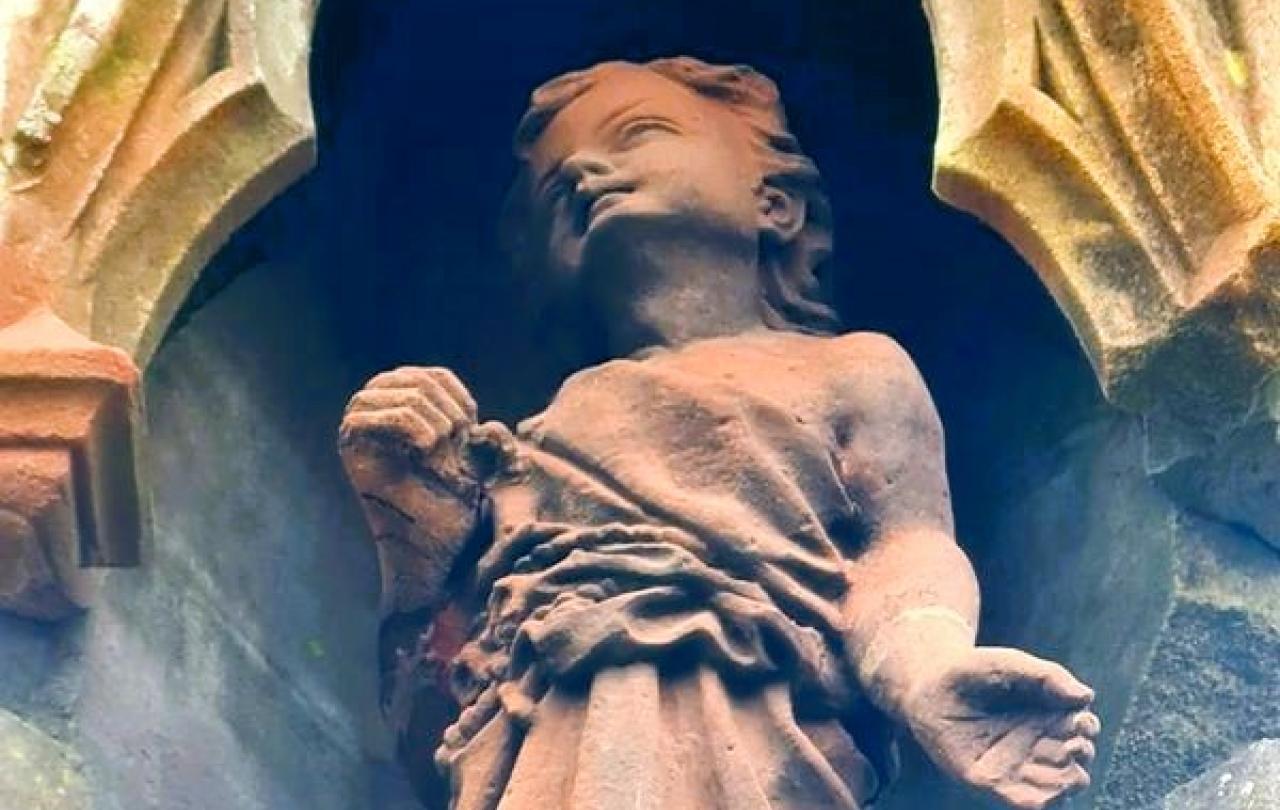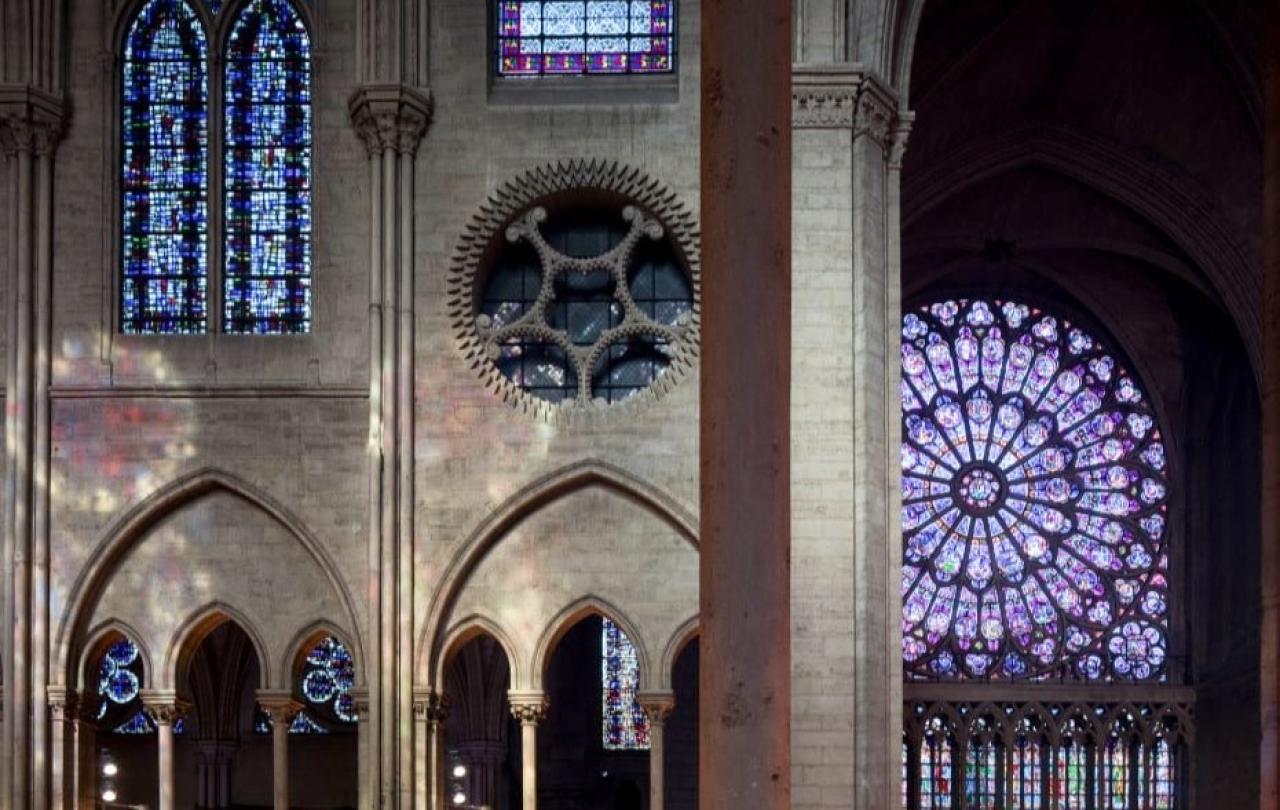
As a historian of Jesus, I have sometimes been asked to comment on the question 'what would Jesus do today?'. I have sometimes responded. In September 2015 I wrote a guest post for the Jesus Blog, titled Jesus was a Refugee. It was on the story of baby Jesus’ escape to Egypt with his parents, as written in the Gospel of Matthew, which I conclude is historically true. It is interesting to me, because I want to understand what informed Jesus’ teaching as an adult.
I am not a theologian, a priest or a pastor. I have spent my academic career carefully working out what is true or false in terms of the many stories of the ancient past. So, when I discuss anything, it is after years of study, collegial discussion and discernment. Historians like me know that our ancient accounts come from particular people at different times, telling things with particular points of view. They don’t seek to tell the whole truth, but they shine a light on what is important to them. They can tweak, spin, modify or drop what is not essential to them, and we see this process unfold in retellings. In what I do, I am as analytical about biblical stories as I am about anything else, recognising that I too am located in a particular time and place, with my own capacity to see or not see. With biblical stories this is both rewarding and challenging because to me they are also Scripture, in that they inform my faith, spirituality and practice.
But this is a world in which sharing of expertise can go up in a puff of public pushback.
I wrote at the height of scaremongering about Syrian refugees who were fleeing to Europe to escape the dangers and devastation in their country and, given its relevance, the post was picked up on other sites. On Bible History Daily, there was a furious reaction in comments. People asked whether – even if Jesus was a refugee – his experience could be mapped on to issues of the contemporary world, which are so very different. Some commenters insisted that Jesus and his family could not be aligned with economic refugees like Mexicans or bogus refugees who were actually Muslim terrorists. More stingingly, I was told I was crazy, a professor of b******t and I was blaspheming for even suggesting that Jesus was a refugee.
That Jesus was a refugee has actually been recognised as part of his life from the very beginning of Christian tradition, and contemporary theologians like Barnabas Asprey can well explore what this means for faith. But it seems that some people were alarmed that I was diminishing Jesus by associating him with people they considered reprehensible.
My job is to understand Jesus in his own world. If I do it properly, people may well find resonances with today. But I do also understand that it is a tricky thing to map Jesus onto contemporary circumstances, especially contentious ones. Over a hundred years ago the philosopher and physician Albert Schweitzer critiqued the 'quest of the historical Jesus' as a whole as covertly creating a liberal model of Jesus. He commented that the 'historical Jesus will be to our time a stranger and an enigma'. If we met Jesus today, he would seem completely alien to us. So, we do have to be careful when we look to him in our arguments concerning current issues. Yet, Schweitzer also put a lot of trust in the words of Jesus, because his 'spirit, which lies hidden in his words, is known in simplicity, and its influence is direct. Every saying contains in its own way the whole Jesus.'
So where do we go with this? What did Jesus say? Frankly, Jesus’ ethos was utterly uncompromising. "Woe to you who are rich … woe to you who are well-fed now" (Luke 6:24-25), he said. There are a decent number of Jesus’ statements that suggest people who were economically struggling should be fed and welcomed, and those with wealth should share what they have with the have-nots. Jesus said to a rich man that he should "go, sell all that you have and give to the poor, and you will have treasure in heaven, and come, follow me" (Mark 10:21). Following Jesus was not about becoming destitute, but about joining a community of disciples who saw each other as one big family of siblings. In this group resources were shared (Acts 2:44-45 and 4:32-37). This is beyond philanthropy. And Jesus didn’t talk about the worthiness of the poor; the problem was not with the poor, it was with the rich.
There’s a big question then in how to use Jesus as a model for ethics. To use Jesus as a model, you have to see the bigger picture of the whole movement he created, within an ancient context, a movement that does not exist any longer in its original form. Was Jesus a refugee? By calling anyone a refugee, in antiquity, I mean someone who flees their home to a place of refuge, to escape danger or disaster. As for my particular 'blasphemy', I reiterate it. Jesus was a child refugee: Jesus’ family fled from the danger of the Roman client king in Judaea, Herod, and escaped to Egypt. In classical Christian doctrine, this is not at all thought of as diminishing Jesus. It made Jesus one of us, in all our human hardships.
I think he turns things around, radically, so that the life of the wandering refugee is actually a paradigm for action.
Curiously, the fears expressed by the commenters on my post mirror ancient attitudes to poor, foreign people. Later apocryphal stories of the holy family in Egypt present them facing continual hostility from Egyptian townsfolk and attacks by robbers. These tales reflect an actual situation in which incoming foreigners, for whatever reason, were not welcome. For refugees, it could be a life of vulnerability. In the second century, the anti-Christian writer Celsus scoffs that child Jesus in Egypt worked for hire because of his poverty (Origen, Contra Celsum 1:28).
Egypt itself was not a totally safe place to be Jewish. Under the Roman prefect Flaccus (38-39 CE), soon after Jesus, there were riots and pogroms against the Jewish population of Alexandria, as the historian Josephus records (War 2:487-98; Ant. 18:257-60). In 41 CE the Roman emperor Claudius cautioned the long-settled Jewish population of Alexandria that they lived in 'a city not their own', and they were 'not to bring in or invite Jews who sail down to Alexandria from Syria[-Palestine]' (CPJ I:151). Later in the first century (70-73 CE), there were many Jewish refugees fleeing dangers in Judaea by going to Egypt (War 7: 407–419). Hundreds of these men, identified as troublemakers by the Romans, were killed, along with their families. I explore this and much more in my new book, Boy Jesus: Growing Up Judean in Turbulent Times. The life of a refugee was hard, and Jesus would have been told his parents’ stories about what they endured.
This is what is so interesting to me, because we know from contemporary studies of trauma that this would have had an impact on Jesus. There is received trauma resulting from the suffering, persecutions, hardships and distresses of parents and grandparents.
So how are these experiences reflected in Jesus’ sayings? I think he turns things around, radically, so that the life of the wandering refugee is actually a paradigm for action. Jesus, in his mission as a teacher and healer, identified himself as a displaced person: "Foxes have holes and the birds of the air have nests, but the son of humanity has nowhere to lay his head" (Matt. 8:20), he said. Jesus was itinerant, and he entered villages with nothing, offering healing and looking for kindness (food, shelter). He asked those who acted in his stead to go out without money or extra clothing, essentially to walk along the road like destitute refugees who had suddenly fled from home, relying on the generosity and hospitality of the ordinary people whose villages they entered (Mark 6.8-11). And it was precisely the villagers’ welcome or not to such people that showed what side they were on when it came to divine justice: "And if any place will not receive you and refuse to hear you, shake off the dust on your feet when you leave, for a testimony to them" (Mark 6.11).
If the sayings of Jesus show his spirit, time and again this spirit rests with the experience of the marginalised, the displaced, the persecuted, the sick and the poor. I say this as a historian, thinking of Jesus in his own time. How that sits with contemporary issues remains a question. To what extent can people of modern times, with all our baggage of private ownership, debts and anxieties about our jobs and livelihoods, share in Jesus’ ethos? In answering it, I suspect few of us will feel comfortable, whatever side we think we are on. But taking out the logs in our own eyes, rather than the specks in someone else’s, has never been easy.
Boy Jesus: Growing Up Judaean in Turbulent Times, Joan Taylor, SPCK Publishing.
Join with us - Behind the Seen
Seen & Unseen is free for everyone and is made possible through the generosity of our amazing community of supporters.
If you’re enjoying Seen & Unseen, would you consider making a gift towards our work?
Alongside other benefits (book discounts etc.), you’ll receive an extra fortnightly email from me sharing what I’m reading and my reflections on the ideas that are shaping our times.
Graham Tomlin
Editor-in-Chief





